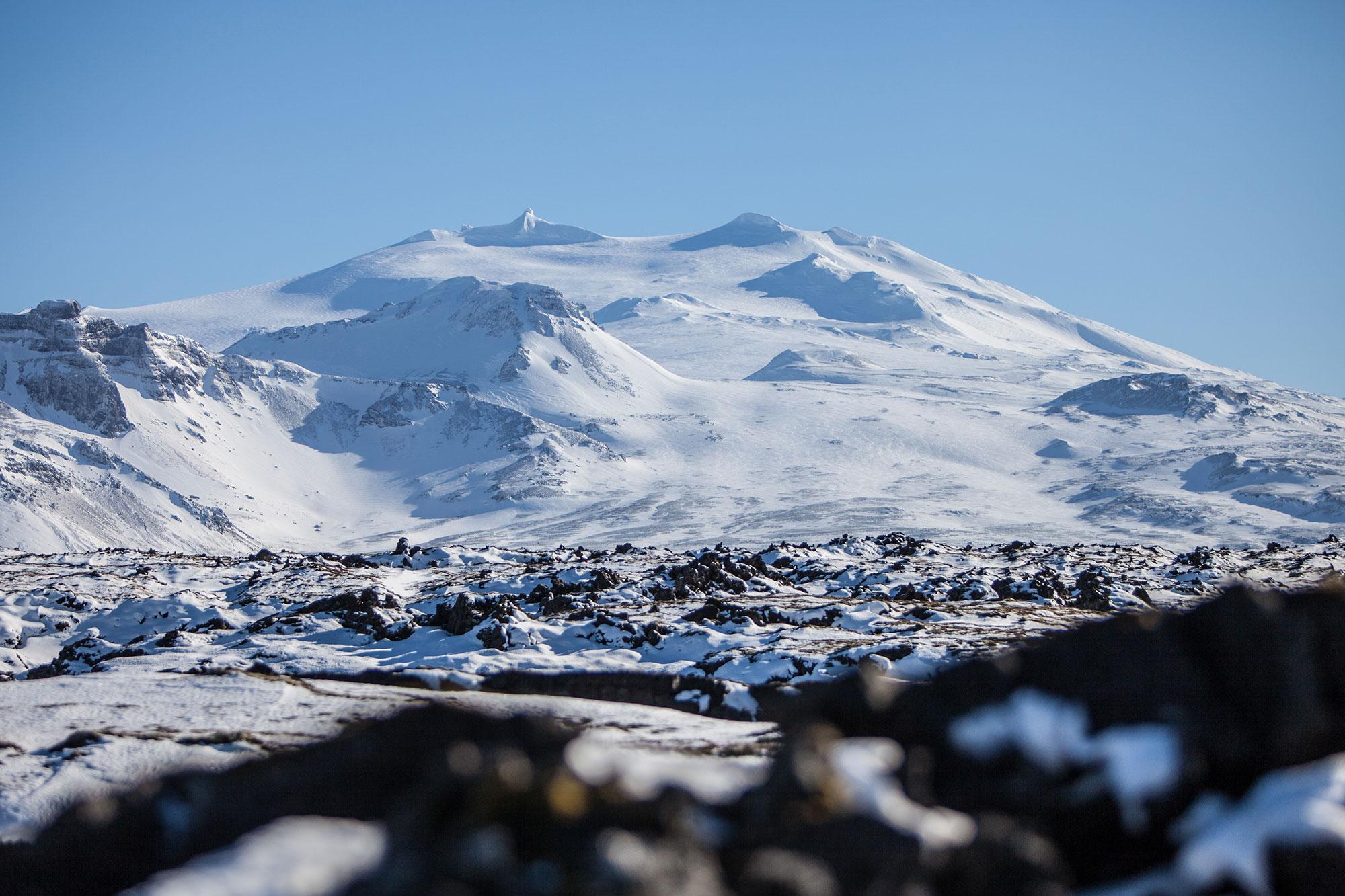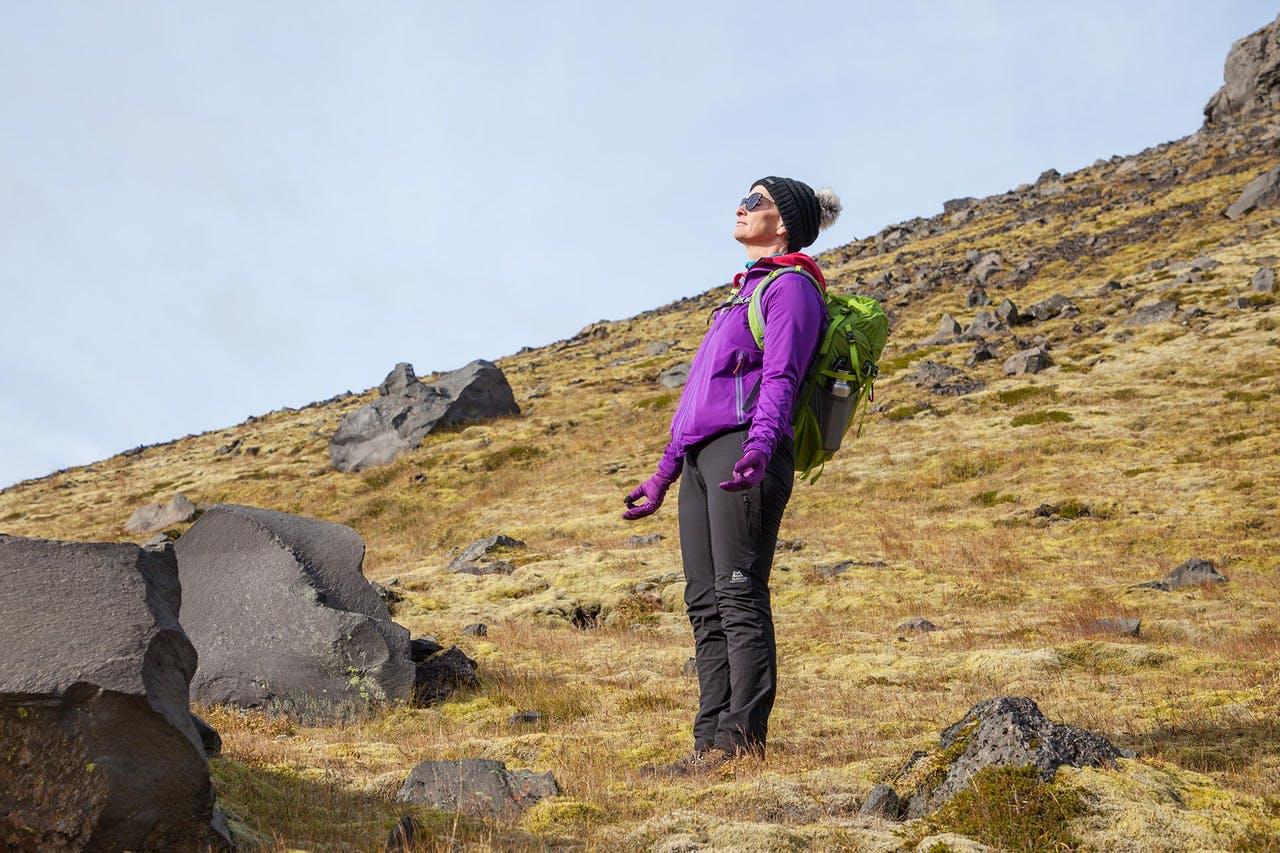Summiting Hvannadalshnúkur - A guides perspective
| All, Travel Guide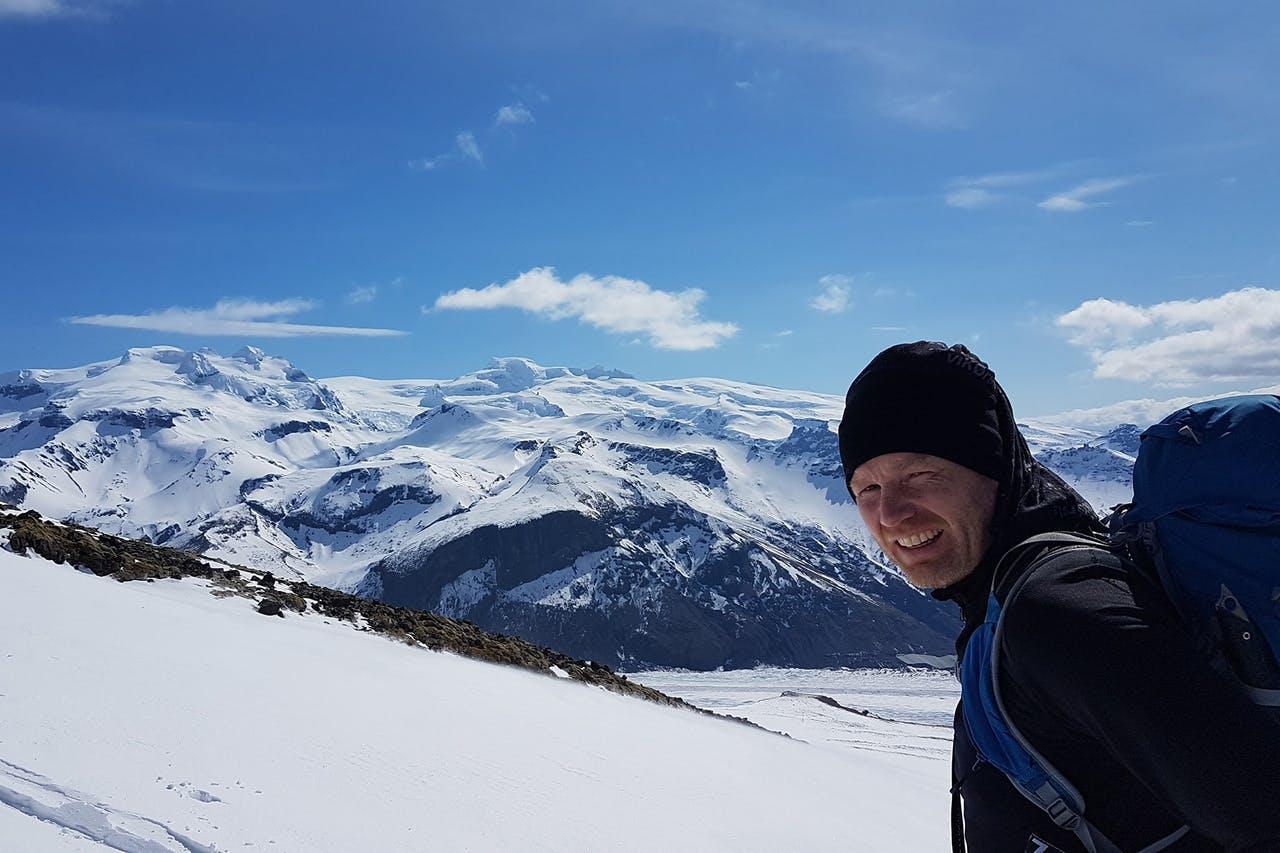
Hvannadalshnúkur - Iceland's highest peak
The Ultimate Post-Coronavirus Mission
As lockdown begins to ease it is time to limber up and look to getting as far away from the sofa and Netflix account as humanly possible. If you happen to live in Iceland, then why not rise to the challenge of tackling the country’s highest summit of Hvannadalshnúkur (2110 meters), as the ultimate symbolic end to the last few months of malaise.
Standing on the summit of Hvannadalshnúkur and looking over the vast expanse of Öræfajökull icecap to the north, with the Atlantic Ocean at your back, is simply spectacular. For many Icelanders climbing their countries highest peak is something of a rite of passage. It is a challenging expedition and will leave anyone who undertakes it with an overwhelming sense of achievement. The mountain is a great combination of a true alpine experience, but also an achievable goal for most people with the right attitude. During the long and plodding ascent, it feels as if you have strayed into a truly otherworldly place, your rope team a mere speck afloat upon an endless ocean of white and blue. For most, attempting Iceland’s highest summit will be a once-in-a-lifetime experience, as well as an impressive feather in the cap of any aspiring mountaineers.
In this article, I will first describe exactly what to expect if you decide to join us on a Hnúkur summit, and then what individuals should do to prepare.

Why Icelandic Mountain Guides?
Hvannadalshnúkur is a serious mountain. It should not be undertaken without an experienced guide, and with a rope team of at least three people. The ascent is non-technical, meaning that you will not be ‘climbing’ vertical rock or ice. Roping together is essential however for the whole second half of the expedition. This is because the route takes you across the top of Falljökull Glacier, just where the outlet begins to depart from the icecap. This does not look like the easy glacier hikes we offer down on the outlet glaciers, as at high altitude the glacier is covered in a thick layer of snow. It will appear as a vast white expanse to the untrained eye. That said, it is impossible to know what crevasses are open beneath the snow. To cross such terrain without a guide and a rope is like walking across a minefield, which could open up and swallow you at any moment.
Last season we took a journalist from the Reykjavik Grapevine on a summit trip, and she happened to ‘punch through’ herself. You can read her article about it here: https://grapevine.is/news/2019/08/02/top-of-iceland-we-climbed-hvannadalshnukur-icelands-highest-peak/
In the unlikely event this happens the guide will then use specialist equipment to haul them back out. No one on a rope will fall more than a meter or two, and so long as you are with a guide on hand to manage the situation, it can be quite exciting. This is the primary reason that even fit, strong and experienced hikers need to undertake Hvannadalshnúkur with a guide. Your guide will use their knowledge and equipment to keep their party safe, and also will take you on a route across the glacier that minimises large crevasse crossings. This route is entirely unmarked and only known to us through repeated crossings, and GPS co-ordinates. In attempting to chart your own route, you will be likely crossing snow bridges over crevasses large enough to swallow a school bus without even knowing it.
IMG are one of the few larger companies in Iceland offering guided trips up Hnúkur. We have decades of experience on the mountain, and our guides are correctly certified. This season will differ from the norm, and there will be more guides than usual offering to run trips to the summit. If you choose to go with a guide other than us, please make sure they are credible. Our prices are very competitive, taking into account guides qualifications, correct equipment, insurance and radio contact with our team at base. If you are aware of an offer ‘too good to be true’ then it probably is - and Hvannadalshnúkur is a mountain where cutting corners can be dangerous.

Am I fit enough?
Summiting Hnúkur is not for everyone. It is a physically difficult challenge. Because you begin from just above sea level, you will be ascending the full 2110 meters. It is claimed that this is the largest single summit day in Europe, as for instance the summit day for Mt Blanc (4810m) will be undertaken from a starting height of 3835m. You will cover around 22 km, and the day will typically take between 12 and 16 hours. This is not an expedition for those keen to develop an interest in the great outdoors, anyone undertaking Hnúkur should be an experienced hillwalker capable of maintaining energy on a steady ascent. You will also need to be mentally resilient, and truly want to be there, as the ascent is a long slog through the snow. The guide who trained me enjoyed using the term ‘sufferfest’. This makes achieving the summit even more rewarding of course.
For Icelanders, Esja is a good comparison. Going to Steinn on Esja is about 3 km one way, with an elevation gain of 550 m. If you were to go up and down Esja four times in a row, you would have done 24 km and climbed 2200 m, which is almost the same as climbing Hnúkur. Occasionally clients have undertaken the summit with the attitude of ‘I’m going to get there no matter how long it takes’. Unfortunately, we cannot accommodate this. If a guide believes a trip will push pat the sixteen-hour point, they will likely turn the team around. In the winter of 2018, I personally spent 19 hours up there, as the snow was very deep and hard to push through. It was physically and mentally exhausting and not a thing that anyone wants to do.
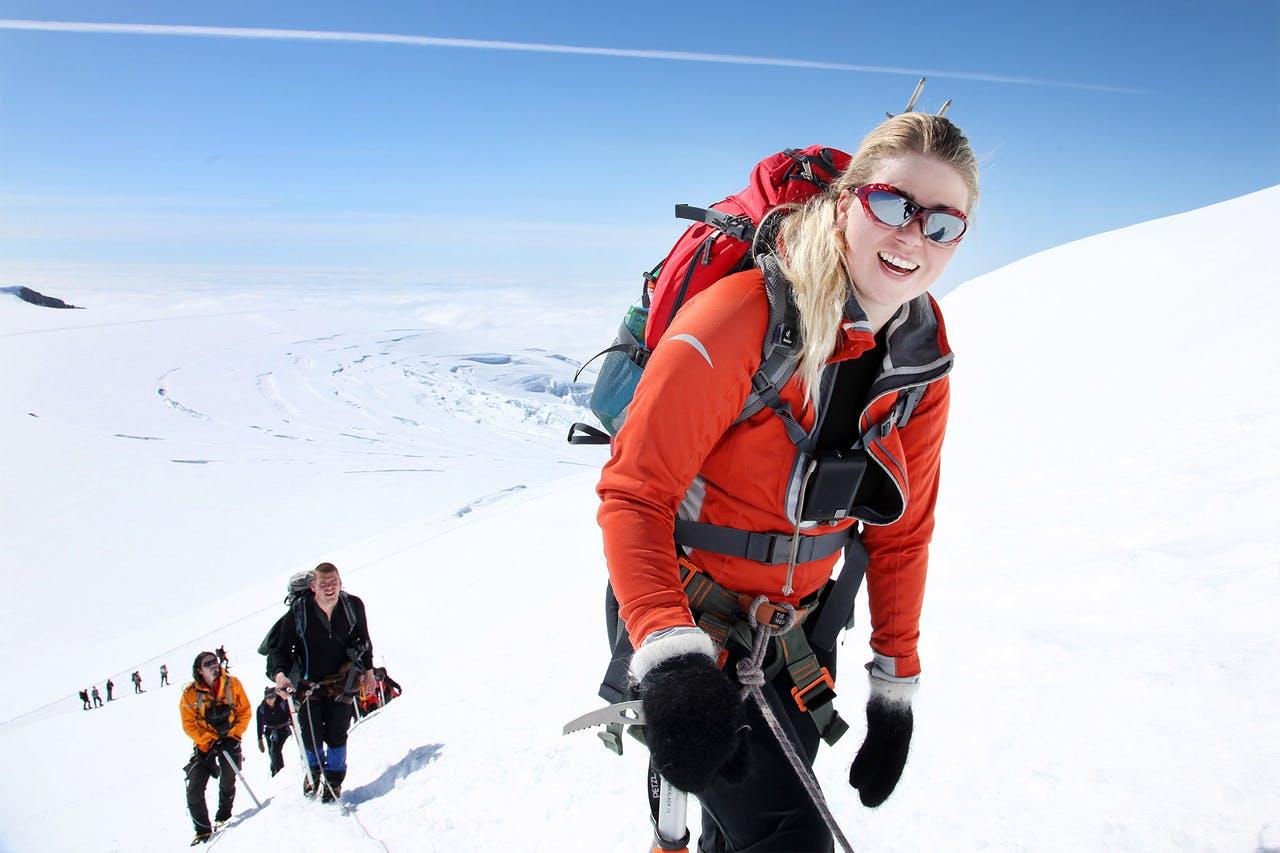
Hiking up to Iceland's highest peak
Organising a Group
As Icelandic tourism reels in the wake of Covid-19, international guests will be few over summer. Hvannadalshnúkur will therefore once again be the domain of Icelanders, and there will never be a better time to get a group together to attempt it. A guide can safely lead a rope team of up to six. Think about your group composition when booking. Beyond 700 meters the whole team must stay together. This means that if one person becomes fatigued, everyone must turn around. If anyone in your group has concerns about their fitness, feel free to contact us and discuss it, and make sure to exercise in preparation. There is no set age limit, and we have guided people to the summit in their late sixties. There is nothing more rewarding from a guiding perspective than helping a client overcome a challenge they had doubts about. A good attitude is the best thing you can bring, but also a sense of realism. If you have any doubts about fitness, do training ascents on Esja. Take a daypack of between five and ten kilograms, and work on finding a steady rhythm of walking that you can maintain for 30-minute blocks. I would also suggest running. Running puts more of a physical strain on the body than walking and will get you to the point of feeling like you want to stop and rest. Set a mental goal (such as ‘I’ll rest in ten minutes when I’m on the other side of the park’) and push yourself through that discomfort barrier. Getting up the endless incline on Hvannadalshnúkur requires several hours of this. We do turn people around early on if required. We must make this decision before we rope together and so it can be disappointing for people. It is best to be physically and mentally prepared.

What steps should I take now?
If you have even the slightest interest and would like more information, please get in touch! These are trying times for tourism and our sales department will happily help you over the phone or email. The numbers of guests to the national park will be minimal this season, and so you will have your pick of whichever dates suit you best. If you have group members unsure of their fitness levels, perhaps book a few weeks into the future and do some hiking beforehand. We will provide all mountaineering equipment needed, snowshoes, harnesses, ice axes, crampons, head torches, etc. We can also provide waterproof layers and boots if needed. You will need to source warm clothing, gloves, polarised sunglasses, and a backpack. Make sure that you wear any new boots before arrival as the summit of Hnúkur is not a place to realize you should have bought boots one size larger!
Occasionally people bring incorrect equipment. This is not a huge issue, because we always do a briefing and a gear check the evening before departure. This is the time we uncover any issues and address them, NOT at 4 am the next morning. This briefing is MANDATORY. It has happened in the past that people have missed the briefing, arrived on location for an early alpine start having brought the wrong equipment. This delays the whole expedition and is not fair for the other clients. Different guides have different approaches and it is important that your guide and group all meet each other beforehand at the briefing.
You want your backpack to be as light as possible. Do not be the guy who carries a camping stove for 22 kilometers. A backpack should contain waterproofs, an additional warm layer (ideally a puffer jacket), sunscreen, food, water, and a camera. Think hard ‘do I need it’ and if the answer is no, then your future self will thank you for not bringing it. Everyone’s body operates differently and requires different amounts of food and water. Personally, I eat quite a lot, and my backpack will have four sandwiches and four Mars Bars, plus a bag of nuts or dried fruit. Most people will eat less. I have never seen anyone need more than that. Give yourself something to get your teeth into, a nice chunky meat and cheese sandwich with lots of butter is better fuel for a sustained hike than kale and chia seeds. Bring capacity for three litres of water. There is a waterfall part way up where you can refill, so you can start with only one litre filled up. All these small weight reductions will help in the long run. Do not drink alcohol the day before, save the beers for a celebration after you are back in civilisation!
You will certainly have earned it!
Keep me informed about the Icelandic Mountain Guides Blog
Outdoor adventure in Iceland is our specialty. Subscribe to our free monthly newsletter to learn when to go, what to do and where to have the best adventures in Iceland.
Related Blog Posts
Related Tours
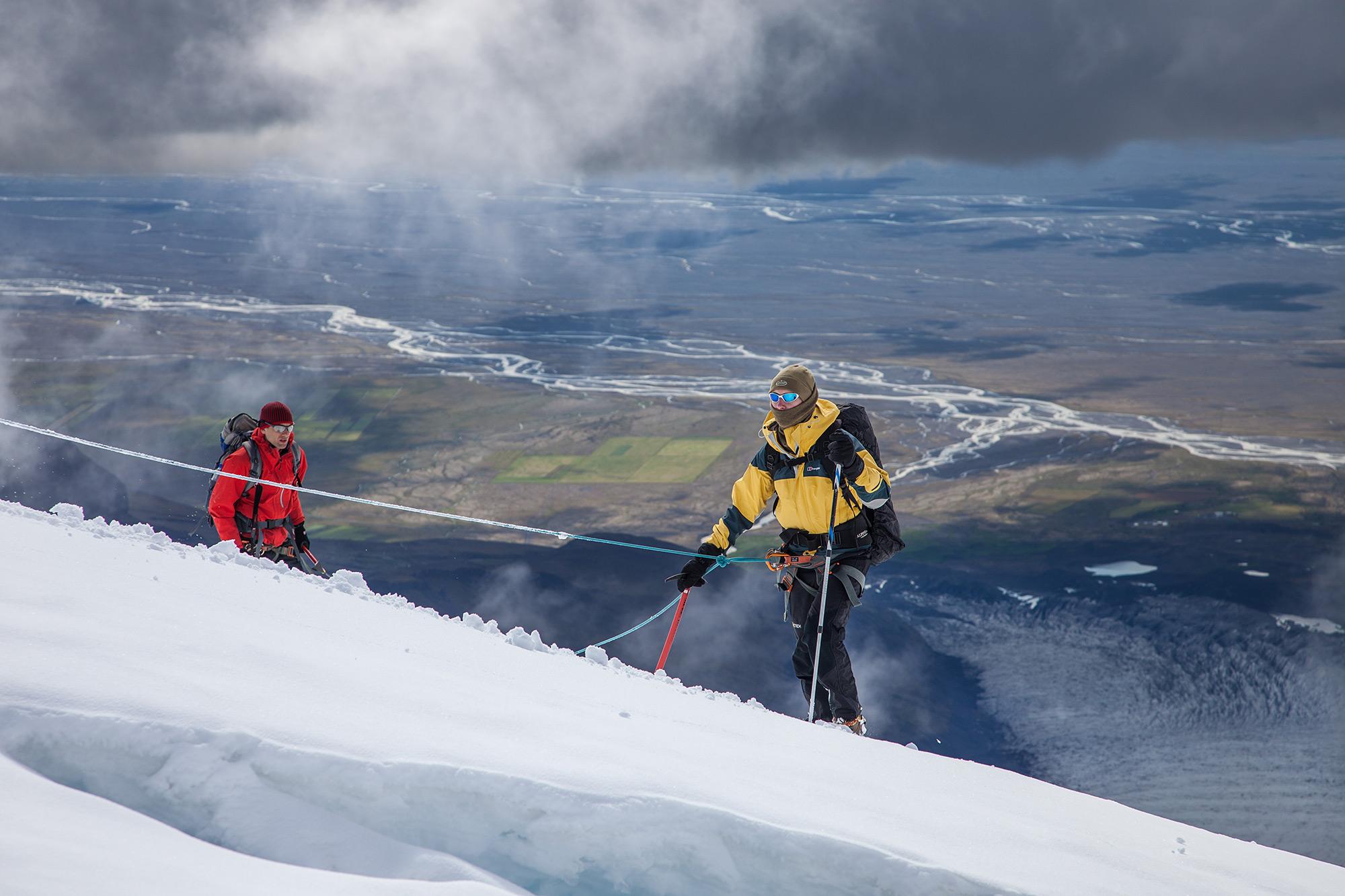
The Three Peaks Challenge

Hvannadalshnúkur - Iceland’s Highest Summit
